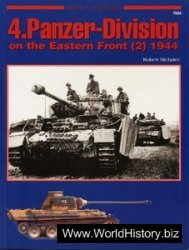In the central highlands the most heavily investigated regions are Wanka, Tarama and Chinchaycocha, which therefore constitute the focus of my comments in this section. Information for the LIP is also available for the Huanuco region to the east (e. g., Morris 1972; Morris and Thompson 1970; Thompson 1967, 1970), the Asto region to the south (e. g., Lavallee 1973; Lavallee and Julien 1973, 1975, 1983), and the south central highlands (e. g., Gonzalez Carre et al. 1987; Schreiber 1993; Valdez and Vivanco 1994; Valdez et al. 1990; Vivanco and Valdez 1993).
Wanka-Tarama'Chinchaycocha
The Wanka, Tarama, and Chinchaycocha regions have been the focus of archaeological research for several decades, and for the last three they have been the focus of long term archaeological research of a regional scope (see D’Altroy 1992; Parsons et al. 2000).
Wari influence is particularly clear in the Wanka region - in sites such as Calpish and Wariwillka (Browman 1970; Flores 1959; Matos 1968; Shea 1969). However, with the exception of David Browman (1970), all scholars working in these three regions find it particularly difficult to identify MH and, to a lesser extent, LH occupations on the basis of local pottery styles alone (Costin 1986; D’Altroy 1992; Hastorf et al. 1989; Le Blanc 1981; Parsons et al. 1997, 2000). As a result proper characterization of Wari influence in the Wanka region is still pending. Fortunately, the following periods—Wanka I (AD 1000-1350), Wanka II (AD 1350-1460) and Wanka III (AD 1460-1533)—are well known.
D’Altroy (1992: 47-70) provides an excellent review of the political and economic changes that took place in the Wanka region during the Wanka I and Wanka II periods, and the following summary relies mainly on his review. Several lines of evidence show that the transition between the Wanka I and Wanka II periods (c. AD 1350) was characterized by a number of interrelated changes: population growth, population nucleation in a few centers, political centralization, social differentiation, and intensification of violent intergroup conflicts. The analysis of settlements patterns, for example, shows that between the Wanka I and Wanka II periods both the number and the size of settlements increased. Two settlements, Hatunmarca and Tunanmarca clearly stand out over all the other settlements in this regard. Settlement location shifted from less protected to more protected places. Several settlements were further protected by defensive walls. Curiously, they lack public monumental architecture, yet some show a separation of elite and non-elite residential areas. Rank-size analysis shows that the first four settlements are similar in size and larger than expected. Analysis of the distribution of pottery styles between these settlements indicates a restriction of interaction between proximate settlements. Other lines of evidence imply that the transition between the Wanka I and Wanka II periods was one of progressive social differentiation within the Wanka population. Analysis of the distribution of different types of artifacts and ecofacts among the various residential units excavated in Wanka settlements shows that domestic units were basically autonomous and were involved in the same primary production activities. The proportion of each of these activities, however, varies between settlements and between residential units within the same settlement. The only activity that seems to be exclusively associated with elite residential units is textile production. The situation is different for the consumption of food as well as utilitarian and sumptuary goods, which varies between residential units. The elite residential units enjoyed preferential access to maize, camelid meat, coca and ajl, as well as to obsidian, shells, metal ornaments and other exotic products. D’Altroy (1992: 69) concludes that “the historical and archaeological data for the end of Wanka II together are consistent with the organization of moderately complex chiefdoms.”
A similar, although not identical, situation is observed in the Tarama and Chinchaycocha regions. Parsons et al. (2000: 147) have noted several changes between their EIP/MH and LIP/LH periods. These changes include: population growth (LIP/LH population increases between two and three times over the EIP/MH population), movement of agriculturalists into higher elevations within the temperate agricultural zone, an intensification of specialized herding in the puna, and an increase of unusually large sites (the special function settlements) along the boundary between high temperate agriculture and
High pasturelands. The investigators argue that during the LIP critical integration between agriculturalist and herding groups was achieved for the first time, and they propose a very interesting explanatory model. They argue that agriculturalists and herding groups were integrated into hierarchical levels of aggregation (i. e., sub-community, community, multi-community or regional, interregional, and supra-regional levels) following a dual organizational structure. LIP “centers” appear to “consist of multiple large settlements and dispersed concentrations of architecture associated with major public rituals.” These “special function settlements,” “isolated cemeteries,” and “regional storage facilities” were the “key components of LIP regional-level sociopolitical infrastructure” (Parsons et al. 2000: 191, 197). Relative to earlier periods, the LIP in the Tarama and Chinchaycocha regions was clearly a period of greater social complexity.
To what extent these detailed pictures of LIP central highland societies can be extrapolated to other highland regions to the north and to the south remains to be determined.




 World History
World History









